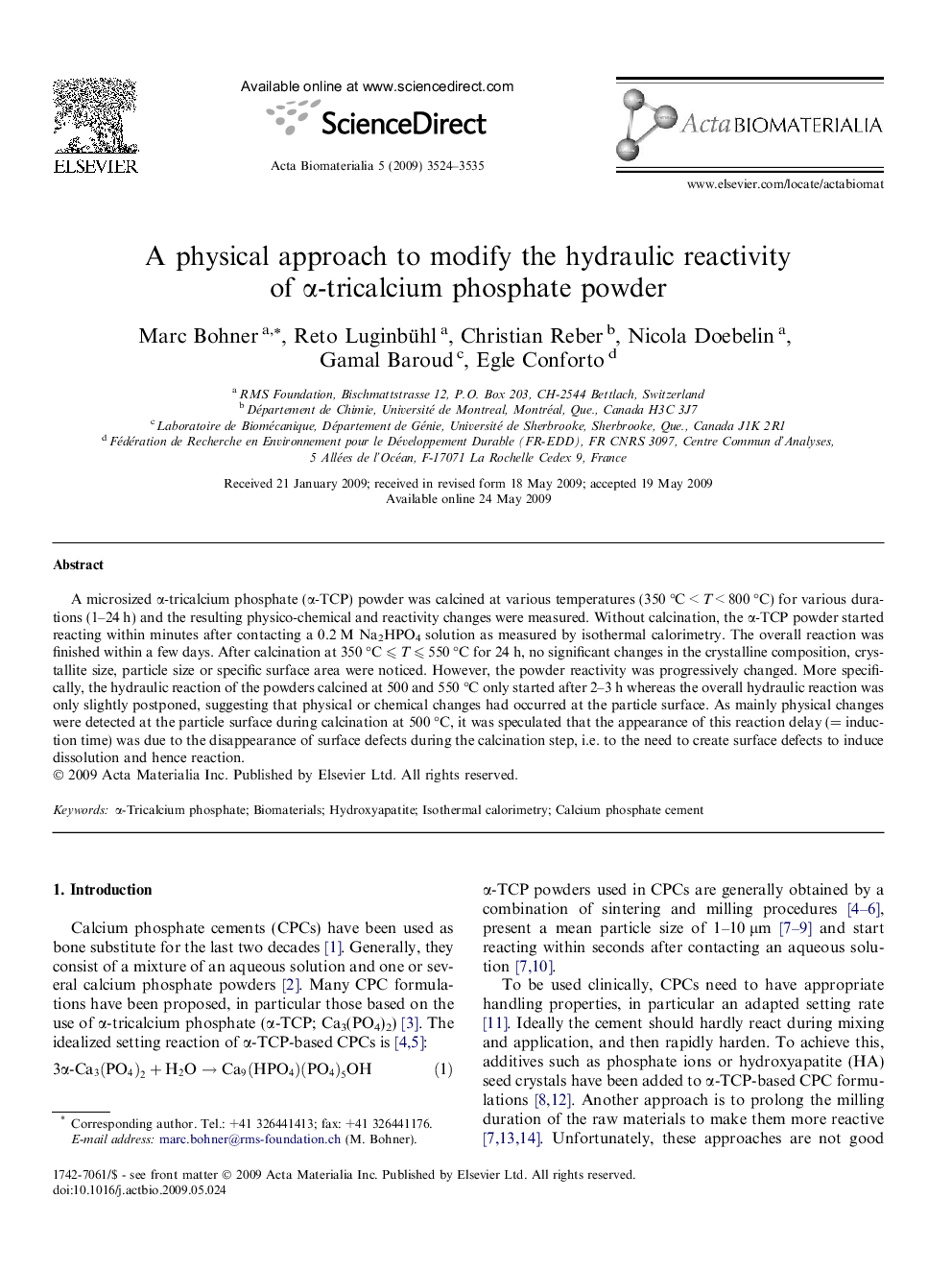| Article ID | Journal | Published Year | Pages | File Type |
|---|---|---|---|---|
| 1880 | Acta Biomaterialia | 2009 | 12 Pages |
A microsized α-tricalcium phosphate (α-TCP) powder was calcined at various temperatures (350 °C < T < 800 °C) for various durations (1–24 h) and the resulting physico-chemical and reactivity changes were measured. Without calcination, the α-TCP powder started reacting within minutes after contacting a 0.2 M Na2HPO4 solution as measured by isothermal calorimetry. The overall reaction was finished within a few days. After calcination at 350 °C ⩽ T ⩽ 550 °C for 24 h, no significant changes in the crystalline composition, crystallite size, particle size or specific surface area were noticed. However, the powder reactivity was progressively changed. More specifically, the hydraulic reaction of the powders calcined at 500 and 550 °C only started after 2–3 h whereas the overall hydraulic reaction was only slightly postponed, suggesting that physical or chemical changes had occurred at the particle surface. As mainly physical changes were detected at the particle surface during calcination at 500 °C, it was speculated that the appearance of this reaction delay (= induction time) was due to the disappearance of surface defects during the calcination step, i.e. to the need to create surface defects to induce dissolution and hence reaction.
